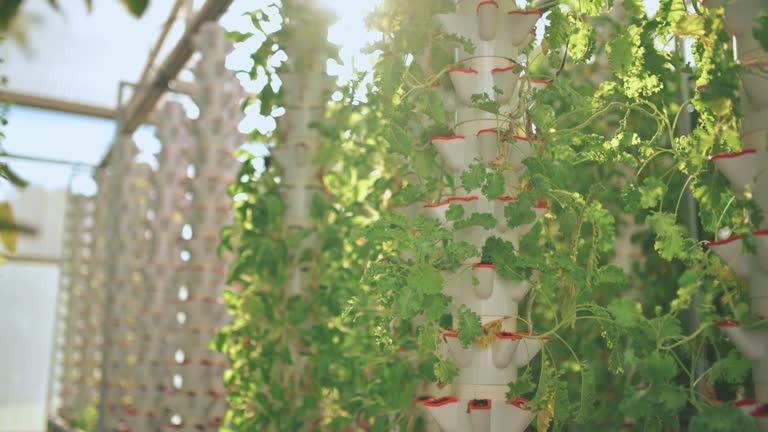The Rise of Vertical Agriculture
As urban populations swell and arable land diminishes, the quest for sustainable and efficient food production has led to innovative solutions. Among the most promising is the aeroponic tower garden, a revolutionary vertical system that is redefining how we grow food. Unlike traditional gardening or even conventional hydroponics, this technology suspends plant roots in the air and mists them with a nutrient-rich solution, leading to remarkably fast growth and exceptional efficiency. This shift to vertical agriculture not only maximizes limited space but also dramatically reduces resource consumption, making it ideal for everything from apartment balconies to commercial greenhouses.
Understanding the Aeroponic System
At its core, aeroponics is a soilless farming technique. It is a subset of hydroponics, but with a critical distinction: the plant roots are never submerged in water. This design choice is fundamental to the system's performance.
How an Aeroponic Tower Garden Works
The operation of an aeroponic tower is a masterpiece of closed-loop engineering. It begins with a reservoir located at the base of the tower, which holds the water mixed with essential mineral nutrients. A submersible water pump then pushes this solution to the very top of the structure. From there, gravity takes over. The nutrient solution cascades down, evenly misting the exposed roots of the plants in each planting pocket as it flows back down to the reservoir, where it is collected and recycled.
This intermittent watering cycle ensures that the roots receive a perfect balance of hydration, nutrients, and, crucially, oxygen. Because the roots are suspended in air, they have constant and direct access to oxygen, a process known as root respiration. This high oxygen uptake is a primary driver for the accelerated growth rates—often up to three times faster than soil-grown counterparts—and overall health observed in these systems.
A Historical Perspective on Soilless Growth
While the modern aeroponic tower garden seems like a cutting-edge invention, the principles of soilless cultivation have roots reaching back millennia. The legendary Hanging Gardens of Babylon and the Floating Gardens ("chinampas") of the Aztecs demonstrate early applications of delivering water and nutrients directly to plants without traditional soil beds.
However, aeroponics itself is a relatively modern innovation within the family of hydroponics. Early scientific exploration in the 20th century, notably by figures like V.M. Artsikhovski and later Fritz Warmolt Went (who coined the term "aeroponics"), proved that plants could indeed thrive by absorbing nutrients delivered through the air or directly onto suspended roots. This foundational work paved the way for the commercialization of the technology decades later, culminating in the sleek, consumer-friendly vertical towers available today.
The Unmatched Benefits of Aeroponics
The advantages of adopting an aeroponic tower for cultivation are extensive and address many of the challenges facing contemporary food systems:
- Exceptional Water Efficiency: The closed-loop system recycles and reuses nutrient water continuously. This results in a water savings of up to 95% compared to conventional soil farming, making it invaluable for arid regions or drought-prone areas.
- Space-Saving Vertical Design: By growing upward, these systems can cultivate dozens of plants in less than one square meter of floor space. This is the key to urban farming, allowing for high yields in small spaces like patios or indoor living areas.
- Accelerated Plant Growth: Higher oxygen uptake at the root level facilitates rapid nutrient absorption, leading to faster growth cycles and more harvests per year.
- Elimination of Soil-Borne Disease: Since there is no soil, the risk of common soil-borne pests and diseases is virtually eliminated, reducing the need for chemical pesticides and herbicides.
Key Components for Optimal Performance
To ensure the rapid growth potential of the aeroponic tower garden is fully realized, several components must work in harmony:
Water and Nutrient Management
The reservoir is more than just a water holder; it is the life support system. It is vital to use a high-quality, easily dissolvable nutrient solution and to regularly check the level. Plants absorb nutrients best in a slightly acidic range (ideally 5.5 to 6.5). If the is too high or too low, the plant roots cannot "unlock" and absorb the necessary minerals, a condition known as nutrient lockout.
Lighting and Timers
For indoor growing, high-efficiency LED grow lights are essential. These lights are often designed to wrap vertically around the tower, ensuring every plant receives optimal light intensity. Timers are the unsung heroes of the operation, automating the light and watering schedules. A typical watering schedule might be 15 minutes on and 45 minutes off for 14-18 hours daily, but this must be adjusted based on ambient temperature and plant type.
Conclusion
The aeroponic tower garden is not merely a gardening fad; it represents a significant technological leap toward sustainable and localized food production. From its history rooted in early soilless agriculture to its modern application in space research and urban homes, it offers a path to faster, cleaner, and more efficient cultivation. For those seeking to maximize yield in minimal space with unparalleled efficiency, the aeroponic tower provides a powerful solution. To explore the possibilities of this advanced method, consider the cutting-edge systems offered by ALTO Garden.

